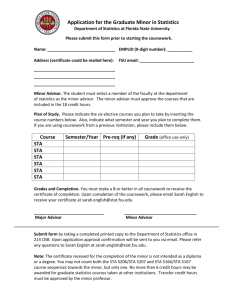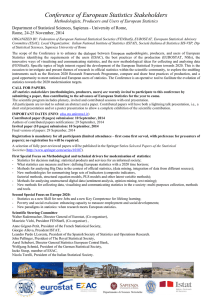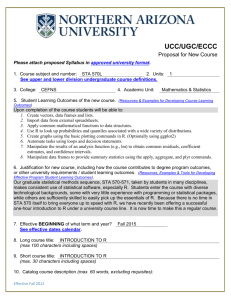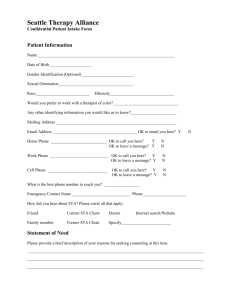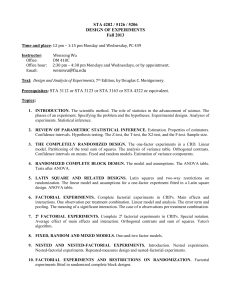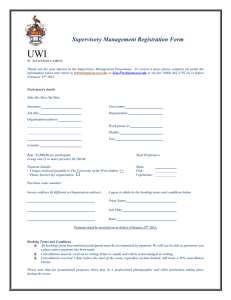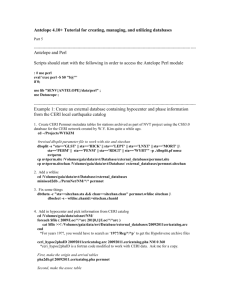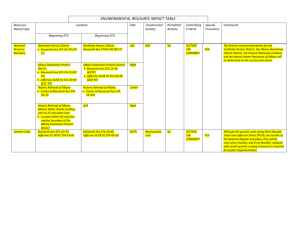Materials Testing Practice Aid - AASHTO
advertisement
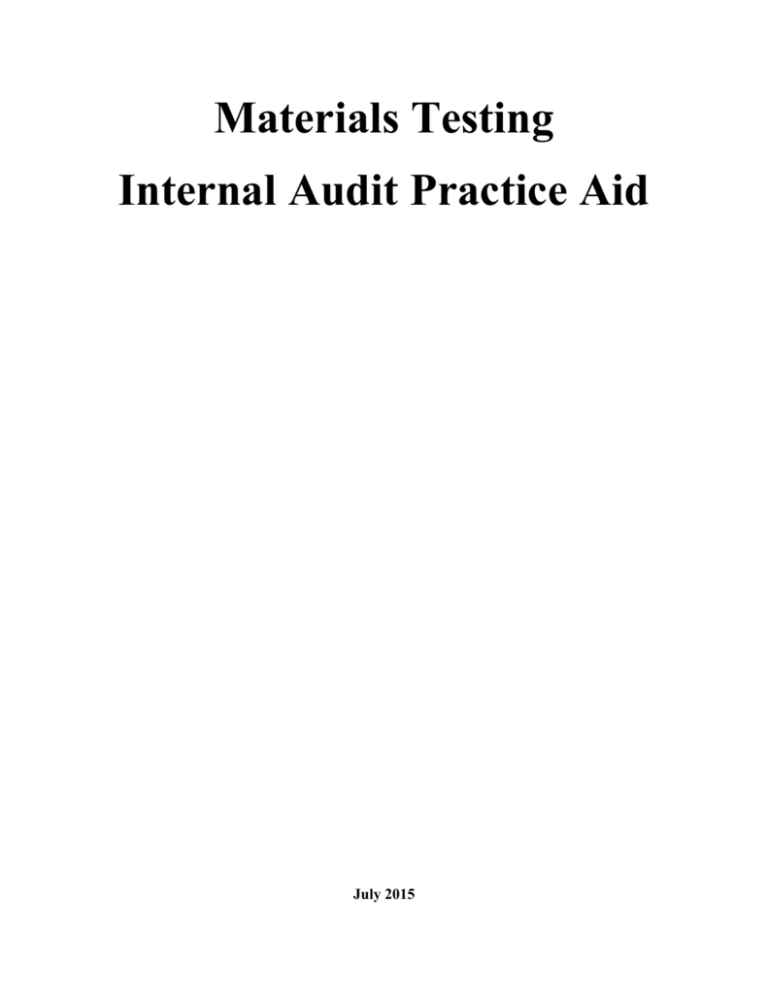
Materials Testing Internal Audit Practice Aid July 2015 Program Description State Transportation Agencies (STAs) use many types of materials on construction projects. To ensure quality materials are used, STAs may specify required procedures for field sampling, testing, inspecting, and controlling these materials. STAs usually develop manuals to assure uniformity in the use and control of materials on construction projects. Projects using Federal dollars also stipulate certain procedures to follow for materials. 23 Code of Federal Regulations (CFR) Part 637 – Construction Inspection and Approval, requires each STA to maintain an accredited Central Laboratory and to assure that all materials used for highway and bridge construction conform to contract requirements. The stated purpose of 23 CFR 637 is to prescribe policies, procedures, and guidelines to assure the quality of materials and construction in all Federal-aid highway projects on the National Highway System. The CFR defines an acceptable testing program, qualified laboratories and testing personnel, quality control and other applicable policies and procedures. The quality assurance program developed by each STA must meet the criteria in 23 CFR 637 and must also be approved by the FHWA. STA laboratories must be accredited by the AASHTO Accreditation Program or a comparable laboratory accreditation program. STA materials testing functions may also participate in the AASHTO Materials Reference Laboratory (AMRL) and the Cement and Concrete Reference Laboratory (CCRL) material inspection programs. Statutes and Regulations 23 CFR 637 – Construction Inspection and Approval, addresses requirements for each STA to maintain policies, procedures, and guidelines to assure the quality of materials used and for construction in all Federal-aid highway projects on the National Highway System. In addition, each STA may have its own specifications and requirements to ensure the quality of materials used on construction projects. Catalog of Federal Domestic Assistance (CFDA#) The use and testing of materials in highway construction is included under CFDA #20.205, Highway Planning and Construction and other related CFDA sections. Scope and Objectives The scope of this engagement includes a review of the materials testing procedures conducted internally or externally for construction projects and other STA needs. Audit Objectives The audit objectives include the following: Objective A: Obtain an understanding of management controls as they relate to materials testing. 1 Objective B: Determine compliance with any STA rules and Federal regulations for testing and inspecting materials, including the roles of the contractor, construction / materials inspector, and materials tester for materials testing and payments to contractors by testing a sample of projects to determine the following: (Requirements should be followed whether the work was performed by STA staff or a consultant). Objective C: Determine compliance with any STA rules and Federal regulations in regards to materials discrepancies, including whether quantities paid on progress estimates have had adequate materials testing and resolution of discrepancies prior to contractor payment. Verify items failing materials testing have been replaced or corrected as required. Objective D: Determine accuracy of materials or inspection information in management systems. Audit Program Objective A: Obtain an understanding of management controls as they relate to materials testing. Step 1: Read and document understanding of STA manuals, policies and procedures for testing materials. Determine if guidelines are periodically reviewed and updated. Step 2: Read and document understanding of Federal guidelines for testing materials. Step 3: Review STA procedures for ensuring Federal requirements are met. Step 4: Interview lab directors to determine the lab’s role in the materials testing function. Step 5: Interview Central Office and district materials personnel to determine their roles in materials testing. Many tests may be performed at the central office location, while actual coring or gathering of information may occur at the district level. Step 6: Interview materials inspectors and construction inspectors to determine their roles in materials testing. Step 7: Obtain an understanding of the processes involved in testing and inspecting materials. Document any concerns pertaining to the material testing and certification process, types of documents submitted for material certifications, who certifies and tests materials, required timeframes for material certifications, how testing is communicated to district offices and other personnel, and how information is tracked or monitored. Determine controls to ensure testers are certified. Determine who is responsible for receiving certifications and verifying materials and certifications match. Determine the processes used for materials 2 testing including the measurements performed, associated calculations and project record documentation. Step 8: When contractors are used for any of the processes noted, determine how their roles coincide with those of STA personnel. Step 9: Observe the material certification process and prepare a memorandum of your observations regarding the process. Step 10: Determine what reports / methods are used by Central Office or Materials Division personnel to track progress of materials testing and determine if backlogs exist. Step 11: Determine source of materials information entered into the STA’s management system. Step 12: Obtain evidence that the STAs quality assurance program for testing materials has been approved by the FHWA, and if annual reporting requirements are met. Step 13: Note any efficiencies or improvements that can be made in the processes followed from comments of personnel interviewed, review of written procedures and requirements and observations. Objective B: Determine compliance with any STA rules and Federal regulations for testing and inspecting materials, including the roles of the contractor, construction / materials inspector, and materials tester for materials testing and payments to contractors by testing a sample of projects to determine the following: (Requirements should be followed whether the work was performed by STA staff or a consultant) Step 1: Determine if measurements were performed in compliance with procedures, including associated calculations. Step 2: Verify records are complete and appropriate to the material reported. Step 3: Verify that the testing of the materials was performed by certified testers. Step 4: Determine if material samples submitted for testing were reconciled to the test results received. Step 5: Determine certifications are reviewed and confirmed according to the material reported. Step 6: Determine if material certifications were signed by appropriate personnel. 3 Step 7: Determine if material certifications were received within required time frames and prior to payments being made. Step 8: Determine if material testing results were communicated to the appropriate district office. Step 9: Verify tickets / invoices are properly identified according to the applicable project and there is adequate documentation to support the quantities shown. Step 10: Determine how or if payments for materials are made when the contractor has not submitted proper certifications. Step 11: Determine if payments have been made for material on hand which has not been installed. Objective C: Determine compliance with any STA rules and Federal regulations in regards to materials discrepancies, including whether quantities paid on progress estimates have had adequate materials testing and resolution of discrepancies prior to contractor payment. Step 1: Perform a test of completeness for contracts in the project management system by doing a forward and backward comparison with contract award information available from design, construction or consulting administration divisions. Step 2: Select a representative sample of projects to review. Document why discrepancies occurred and how discrepancies in materials testing are handled or resolved. Step 3: Determine material discrepancies are resolved and explained in adequate detail, and adjustments are made for failing material. Step 4: Interview contracting and legal personnel to determine any existing cases that resulted from overriding discrepancies, or from materials that were not tested before they were paid. Determine if any changes to procedures or policies have occurred as a result of cases reviewed or discussed. Step 5: Interview lab directors, inspectors, Central Office and Materials Division personnel to determine if changes are needed in processes to accept materials or in overriding discrepancies. Step 6: Determine possible repercussions to the STA and / or personnel for overriding discrepancies in contract management, and paying on material before materials 4 are tested (i.e. added requirements for testing, rip out materials at cost to the STA, deal with sub-standard materials, etc.) Step 7: Note any efficiencies or improvements that can be made in the processes involved in resolving and / or overriding discrepancies. Objective D: Determine accuracy of materials or inspection information in management system. Step 1: Review the system utilized by management for documenting the materials testing results and tracking materials on STA projects to ensure all information necessary to meet Federal and STA requirements have been included in the system. (This may be an internally developed system or purchased software such as Site Manager). Step 2: For the sample of material certifications tested above, trace information in the management system to source documents to determine materials or inspection data entered is accurate and complete. Step 3: Determine if the responsible area is performing periodic reconciliations of data entered into the system to the source documents to ensure its accuracy by someone other than the party entering the data. Step 4: Test a sample of reconciliations to ensure they were performed and any appropriate adjustments were made in a timely manner. 5
